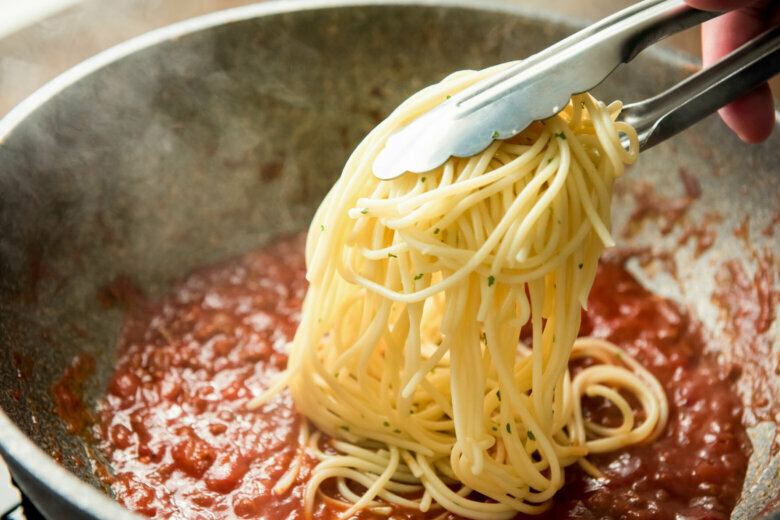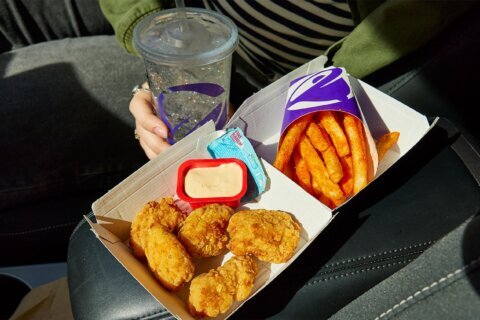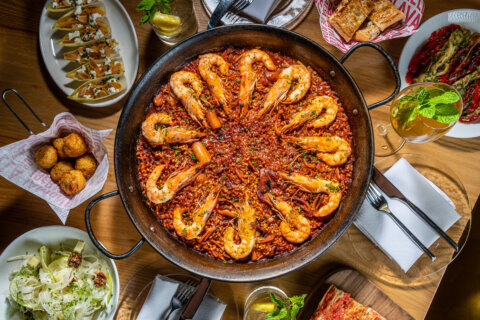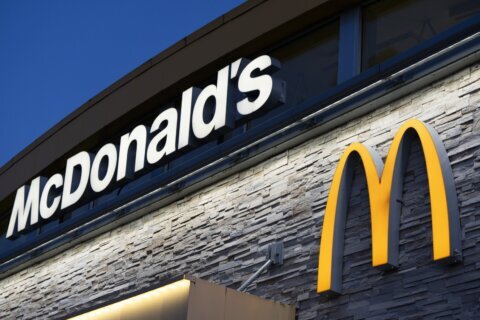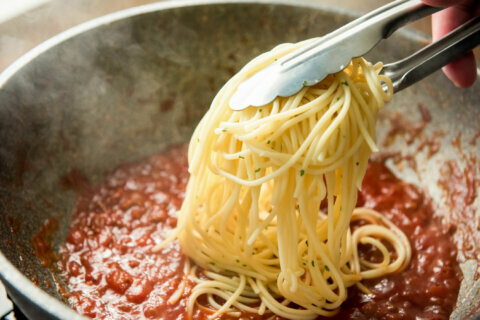
We all have a soft spot in our heart for buttered noodles, but it’s not going to cut it for a family dinner on the regular.
Luckily, pasta is a quick meal that nearly always tastes fancier than it really is — and it’s easy for teens and tweens to cook themselves.
Instead of throwing things at the wall to see what sticks, let your kids throw a bunch of ingredients into pasta and see what combinations become their new favorite. Just grab a skillet and make a quick meal out of pantry, fridge and freezer essentials.
Let this be a cheat sheet of ideas for simple dinners (plus leftovers) that can be built around a pasta base.
Mix and match two or three items from the following categories, and you’ll have hundreds of ideas for the meal plan.
It all starts with pasta and sauce
Let your kids experiment with different types and shapes of pasta to change up the feel of the meal every time.
There’s a world of noodles on shelves, including high fiber, whole grain and protein-boosted options; chickpea, lentil, black bean and other legume pasta; and gluten-free options made with rice and corn.
Frozen or fresh options such as gnocchi and cheese- or meat-filled tortellini and ravioli can also become part of the rotation. For extremely busy days, keep a few precooked pasta packets on hand to make meal prep even speedier.
For sauce, you can certainly make a homemade marinara, but there’s no shame in keeping a variety of jarred and premade refrigerated options on hand. And sometimes simple olive oil is all it takes to bring the meal together.
Start by heating olive oil or sauce in a pan while the pasta boils, then add ingredients to heat through. When the pasta is done, toss it in and serve.
Canned or jarred beans and vegetables
For pasta, stick to varieties of beans that are naturally creamy and tender, such as cannellini beans, butter beans or great northern beans. Or stir in garbanzo beans (also called chickpeas), for a slightly firmer textural contrast and a nuttier taste. Drain and rinse canned beans before using them to reduce the sodium content.
Jarred, water-packed or marinated vegetables, such as roasted red pepper slices, artichoke hearts and sundried tomatoes, can give pasta a Mediterranean feel. No need to rinse here — the marinade will add more flavor.
Add frozen vegetables
Fresh vegetables are always fantastic. Frozen vegetables have just as many nutrients as their fresh counterparts, so you’re not losing anything by keeping the freezer stocked with as many options as possible. How many? How about:
• greens such as kale and spinach
• vegetable noodles made from zucchini or squash, which can be tossed with pasta noodles for variety
• chopped or whole vegetables such as cauliflower, broccoli, asparagus and peas
• sliced wild mushrooms.
It’s also helpful to have a few packages of mixed vegetable blends on hand, such as Italian- or Mediterranean-style combinations, for the nights when no one has the bandwidth to make decisions.
Meaty add-ins
Precooked meat options or plant-based meat substitutes add more protein and flavor to pasta meals without extra work. Well, maybe one bit of extra work: If you’re picking frozen meatballs, thaw them first to avoid cold centers. You might want to try:
• meatballs (beef- or poultry-based)
• leftover rotisserie chicken
• bacon
• sliced, fully cooked sausage
• chopped or sliced salami or ham.
Frozen quick-cooking seafood such as shrimp or scallops can also be tossed into the pasta water during the last few minutes of cooking.
Cheese, please
Feta might be the most popular pasta cheese on TikTok, but it isn’t the only cheese that elevates a pasta meal.
Instead of baking cheese into your pasta, add it at the last minute and let the residual heat melt the cheese slightly. Try:
• crumbled feta, gorgonzola or fresh goat cheese
• sliced or cubed soft rind cheeses such as brie and camembert
• small mozzarella balls such as pearls or bocconcini
• cubed smoked soft cheeses such as mozzarella or gouda.
For creamy curds such as fresh ricotta or burrata, spoon or slice the cheese on top of the pasta just before serving.
Don’t forget the toppings
Speaking of cheese, a classic sprinkling of an aged cheese is never a bad idea. Parmesan, pecorino, asiago and Grana Padano are all salty, hard Italian cheeses traditionally used for topping pasta.
If lactose isn’t your friend, add textural variety and crunch with panko breadcrumbs (regular or gluten-free) or toasted chopped walnuts.
One final touch
After stirring in the cooked noodles with your sauce and extras, add a splash of pasta water to the pan (up to 1/4 cup for every 8 ounces of pasta). Rather than make the sauce too watery, the dissolved starch in the water actually helps thicken the sauce so it sticks better to the pasta.

